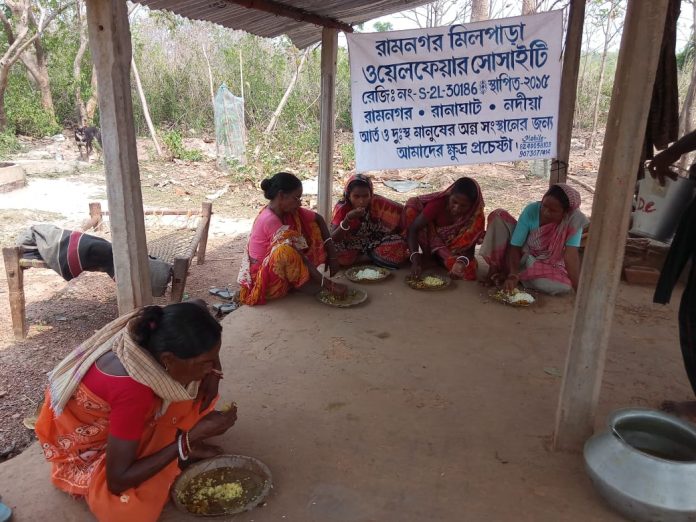The pandemic will leave 375 million children with long-lasting health and economic impacts: CSE’s 2021 State of India’s Environment report
“The defining event of the year that has gone by has been the Covid-19 pandemic, something which the world is still struggling to come to terms with. The time has now come to investigate what the pandemic is going to leave behind for us in the longer term – a lost generation, scarred by ill-health, malnourishment, acute poverty and a debilitating break in educational accomplishments. This is what the State of India’s Environment (2021) Annual reports and brings to life,” said Sunita Narain, director general, Centre for Science and Environment (CSE) and editor, Down To Earth, while releasing the annual publication here today.

The SoE – as the State of India’s Environment report is referred to – is an annual publication of Down To Earth magazine, brought out in association with CSE. The 2021 edition, a 442-page compendium of news, views and analysis, was jointly released here today at an online event by over 60 environmental thinkers and activists, journalists and academics from across India .
Says Richard Mahapatra, managing editor of Down To Earth: “From climate change, industry, air pollution and water to rural development, renewable energy, waste, habitat and forest, the 2021 edition – like its predecessors – covers it all, and more. It also has three special sections: an assessment of the pandemic and its impacts a year after, a data analysis of how India’s states are faring on environment and development parameters, and a tribute to the decade of biodiversity.”
Says Narain: “The overall assessment is that our air and water quality is under stress; all trends show that pollution is increasing and this has massive impacts on our health. Even during the lockdown, data shows that river pollution did not reduce. Clearly, we need to do much more to improve the quality of the air we breathe and the water we drink.
“The good news is that we are learning to do things differently. We are adopting technologies that will be affordable to large numbers and so, sustainable. This is where the answer will be – in differently done sewage treatment, to mobility systems that will move people and not cars.
“We need to practice the learning that for a country like India, we cannot improve environment without inclusive and equitable growth for all. And do this at scale. This is the challenge and the opportunity.
“The challenge also is to use the environment for development, so that in these climate-risked times we can improve livelihood, nutrition security and build resilience of communities. SoE 2021 looks at the climate change threat from extreme weather events on one hand, and the success of MNREGA in building ecological assets like water structures on the other. We need to invest in building natural resource-based economies which are both sustainable and also create local wealth and wellbeing.”
A taste of SoE 2021: What the 2021 annual says…
On the pandemic
- The country is all set to usher in a ‘pandemic generation’: 375 million children (from newborn to 14-year-olds) may suffer long-lasting impacts, ranging from being underweight, stunting and increased child mortality, to losses in education and work productivity.
- The pandemic also has its hidden victims — over 500 million children forced out of school globally. India accounts for more than 50 per cent of them.
- “Covid-19 has made the world’s poor poorer,” says Narain: 115 million additional people might get pushed into extreme poverty by the pandemic – and most of them live in South Asia.
In her appraisal in the SoE, Narain adds: “The pandemic is a shock response to our dystopian relationship with nature. It has amplified the inequity and deep divisions in our world. The places where the disease is most likely to breed is where there are no urban services; where settlements are overcrowded; where water supply and sanitation is inadequate; and where people have no way to stay safe.”
On industrial pollution
India’s air, water and land have become more polluted between 2009 and 2018. Of 88 major industrial clusters in the country, CPCB’s own evaluation indicates that
- 35 show overall environmental degradation
- 33 point to worsening air quality
- 45 have water that is more polluted
- 17 have land pollution that has become worse
Tarapur in Maharashtra has emerged as the most polluted cluster.
CSE experts point out that this data clearly indicates a lack of action over the years to control and reduce pollution even in areas which were already identified as ‘critically’ or ‘severely’ polluted.
On the state of India’s states
- India ranks 117 among 192 nations in terms of sustainable development – it is now behind all South Asian nations except Pakistan
- With respect to meeting the Sustainable Development Goals, the five best performing states in India are Kerala, Himachal Pradesh, Andhra Pradesh, Tamil Nadu and Telangana
- Going by the same parameter, the five worst performing states have been Bihar, Jharkhand, Arunachal Pradesh, Meghalaya and Uttar Pradesh.
On air pollution
- 1.67 million Indians died due to air pollution in 2019. The economic cost was over US $36,000 million, equivalent to 1.36 per cent of India’s GDP
- India desperately needs a vehicle scrappage policy. By 2025, we will have over 20 million vehicles nearing the end of their lives. These will add to the pollution and environmental damage.
On water
- Drinking water to all households of rural India – this is one objective that has eluded India forever: 11 past deadlines have been missed. The Jal Jeevan Mission’s target to provide drinking water to all rural households by 2024 will need focus on making the water source sustainable; recharge of groundwater and rainwater harvesting will be critical.
- In all the gloom, there is one good news: since 2014-15, an average 34 per cent of MGNREGA funds have been spent on water-related works, leading to creation of almost 11 million assets in half a million villages.
- Contrary to popular belief, India’s rivers did not see any significant improvement in their water quality during the lockdown. Of India’s 19 major rivers, five – including Ganga – ran dirtier in the Covid-19 period.
On biodiversity, forests and wildlife
- What is well known is that India’s flora and fauna is under threat. What is relatively unknown is the scale – 438 plant species (of which 95 per cent are flowering plants, including food crops) and 889 vertebrates and invertebratesare threatened.
- Environmental crime cases are piling up, and disposal is slow. 34,671 crimes were registered in 2019, and 49,877 cases are pending trial. To clear the backlog in a year, courts need to dispose of 137 cases a day.
- Has India’s forest cover really grown by 5,188 sq km since 2017, as claimed? Maybe not, as the Forest Survey of India mistakes “trees for forests”: it counts orchards, plantations and even trees along highways as parts of forest and tree cover
- There is data confusion on tigers as well. India has added 714 more tigers, but the area occupied by tigers has shrunk by over 17,000 sq km (in the last four years).
- Forestland diversion continues unabated. Over 11,000 hectares were diverted in 22 states in 2019. Eight coal projects granted clearance in ‘No-Go’ areas will divert 19,614 ha of forestland, fell over 1 million trees, and evict over 10,000 families.

Reported by Ms. Pratyusha Mukherjee, a Senior Journalist working for BBC and other media outlets, also a special contributor to IBG News. In her illustrated career she has covered many major events and achieved International Media Award for reporting.




















